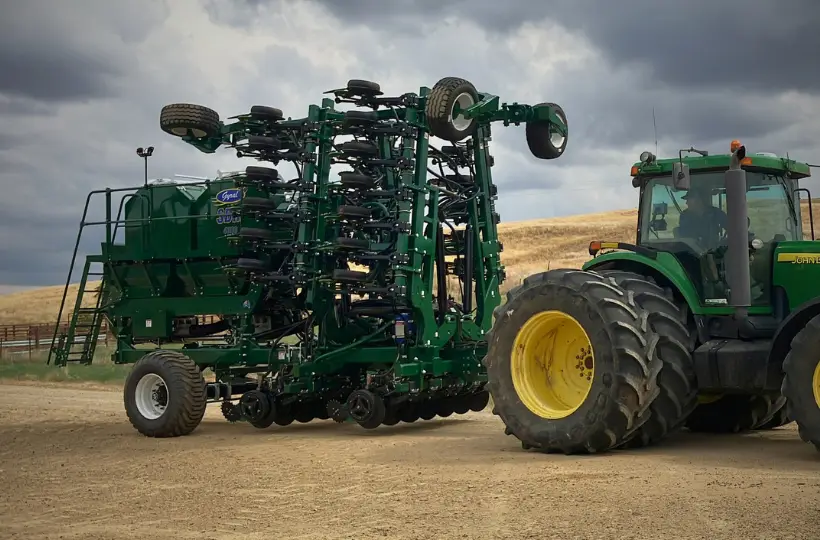As the planting and harvesting seasons approach, farmers face the pressure of getting their crops in the ground or reaping the rewards of a long growing season. Ensuring that your machinery is in top condition and optimised for performance can make all the difference in maintaining peak efficiency during these busy times. Here’s how you can maximise the use of your equipment and keep your farm running smoothly during peak seasons.
1. Routine Maintenance Tips
Proper maintenance is the key to ensuring your equipment is running efficiently when you need it most. A few simple maintenance tasks can prevent costly downtime and unexpected repairs during busy periods. Before the start of each season, make sure to:
- Change oils and filters to keep your engine running smoothly.
- Inspect and clean air filters to improve fuel efficiency and performance.
- Calibrate machinery such as planters and seeders to ensure they are planting at the correct depth and spacing.
- Lubricate moving parts to reduce wear and tear.
- Check hydraulic systems for leaks and perform tests to ensure they’re working correctly.
These steps can help reduce the likelihood of malfunctions during critical planting and harvesting times.
2. Proper Storage and Care
Storing equipment properly during the off-season is just as important as maintaining it during peak seasons. If your machinery isn’t stored correctly, it could face unnecessary wear, and the next season could bring costly repairs. Here’s how to store your equipment properly:
- Keep machinery in a dry, well-ventilated area to avoid rust and moisture damage.
- Clean your machines thoroughly before storing them to prevent residue buildup that could affect performance.
- Use fuel stabilisers in your fuel tanks to prevent fuel degradation.
- Disconnect the battery to prevent drainage, and ensure that tires are inflated to the correct pressure.
Proper storage not only prolongs the life of your equipment but also ensures it’s ready to perform at its best when it’s needed most.
3. Upgrading Equipment for Increased Efficiency
Sometimes, the best way to maximise your equipment’s potential is to invest in new technologies or machinery that offer greater efficiency. Newer models come equipped with advanced features like GPS guidance systems, automation, and data analytics to optimise operations. Here are some features to look for in an upgrade:
- GPS and Precision Agriculture: These systems ensure accurate planting, irrigation, and fertilisation, leading to better crop yields and reduced waste.
- Automation: Self-driving tractors and harvesters can significantly reduce the labor needed during peak seasons, allowing for more tasks to be completed in less time.
- Telematics: Some modern equipment offers remote monitoring, enabling farmers to track equipment performance and detect potential issues before they cause downtime.
Upgrading your equipment not only improves efficiency but also reduces the risk of breakdowns, helping you get the most out of your machines during busy times. Excel Agriculture’s advanced products are designed with the latest technology to provide higher efficiency, including GPS guidance and automation features.
4. Pre-Season Checklists
Before the busy planting or harvesting season begins, it’s important to conduct a thorough pre-season equipment check. A checklist will help ensure that everything is in top working order and will help prevent any surprises when you need your machinery the most. Your pre-season checklist should include:
- Inspecting tire conditions and checking for any cracks or damage.
- Ensuring all hydraulic hoses are intact and properly connected.
- Testing all electrical systems to ensure they’re functioning properly.
- Verifying that all seed or fertiliser hoppers are free from obstructions.
- Reviewing all operator manuals for any maintenance reminders specific to your equipment.
By taking the time to prepare your equipment ahead of time, you ensure that you’re not wasting valuable time fixing problems when you should be focusing on the task at hand.
5. Training Your Team
Having well-trained staff who understand how to operate equipment efficiently can make a huge difference in maximising productivity. Ensure that all operators are familiar with:
- The specific machinery they’ll be using, including how to adjust settings for different tasks (e.g., planting depth, row spacing).
- Best practices for maintaining equipment during the season, such as routine checks and troubleshooting.
- Safety protocols to avoid accidents or damage to machinery.
A well-trained team can help reduce mistakes that might cause delays or machine malfunctions, making your operations more efficient during critical periods.
6. Maximising Fuel Efficiency
During peak seasons, fuel consumption can become a significant cost. By taking steps to optimise fuel use, you can lower operating costs while still maintaining efficiency:
- Calibrate fuel systems to ensure fuel is being used optimally.
- Operate machinery at optimal speeds—running at maximum speed can increase fuel consumption without a proportional increase in output.
- Use fuel-efficient equipment designed to reduce fuel consumption while maintaining performance. Excel Agriculture’s machinery is built with fuel efficiency in mind, helping you reduce operational costs without sacrificing power.
Conclusion
Maximising the efficiency of your equipment during peak seasons requires preparation, attention to detail, and sometimes an upgrade to newer technologies. By performing routine maintenance, properly storing and caring for your equipment, and ensuring your team is fully trained, you can reduce downtime and ensure your machinery performs at its best. Excel Agriculture’s products, known for their durability and precision, can play a significant role in helping you optimise operations and get the most out of your farm equipment. The time you invest in preparing your equipment now will pay off in improved efficiency and higher productivity when it matters most.



